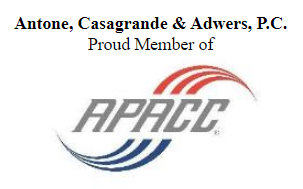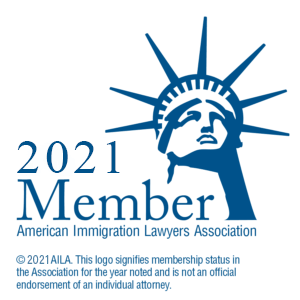L-1 Visa
The L nonimmigrant classification is a vital tool for multinational corporations that wish to transfer key foreign employees to the United States to work for an affiliate company. It is also useful for foreign entities that wish to send employees to the United States to open a new branch office or subsidiary. A United States entity may petition for L-1 classification for a foreign national who has been employed full-time outside the United States for one continuous year of the three years preceding the time of application. The organization from which the applicant is coming must have a qualifying relationship to the United States entity, and the foreign national’s previous positions must have involved managerial, executive, or specialized knowledge duties. The foreign national must be an employee of the company abroad and not an independent contractor or contract employee.
The spouse and minor children of the L nonimmigrant are permitted to accompany the foreign national in L-2 derivative status. The spouse of a principal L-1 may apply for work authorization with the United States Citizenship Immigration Services (USCIS). If you have any questions about applying for this type of permit, feel free to contact our immigration L-1 visa lawyers.
Qualifying for L-1 Intracompany Transferee Status
To qualify for L classification, there are various requirements for both the foreign national and the petitioning entity. Among these, three issues predominate: the previous or current employment of the foreign national; the corporate relationship between the United States and foreign entities; and the classification of both the foreign national’s intended employment in the United States and previous or current employment with the foreign entity as either a manager, executive, or an employee with specialized knowledge. This means that the employee does not need to be filling the same position in the United States that they occupied abroad. However, the employee must be qualified for the position in the United States.
A critical requirement is that the United States and the foreign entity must be legally affiliated for the employee to qualify. There are designated qualifying business relationships, which include parent/subsidiary, branch office, affiliates (subsidiary/subsidiary), same employer, and certain joint ventures. Where ownership of both entities is not unified, it must be demonstrated that the ratios of equity ownership interests in the organizations are approximately the same. If common ownership of both entities cannot be demonstrated, it is still possible to demonstrate common control of the organizations to qualify for the L-1 visa. These relationships must be equity based. Non-equity relationships, such as common directorships, do not create a qualifying relationship.
The L-1 visa is also available for an individual to come to the United States to open a new office for the company abroad. USCIS imposes certain additional requirements to open a new entity in the United States. USCIS requires the United States entity to have evidence of physical premises, staffing, and the financial ability to transact business, demonstrating that the new entity is capable of commencing operations. Depending upon the size of the new United States entity and existing affiliated domestic entities, USCIS may require a comprehensive business plan. Typically, an L-1 visa for a new office is initially approved for one year. Then to file for an extension, the company must submit updated evidence to prove the new office in the United States has continuing viability. A lawyer in Michigan could help a business professionals determine if a company is eligible for an L-1 visa.
What is an L-1A Visa?
The foreign national applying for an L-1A visa must come to the United States to perform in an executive or managerial position. Executive duties primarily involve establishing goals and policies; directing the management of the organization; and exercising wide latitude in discretionary corporate decision-making. An executive receives only general supervision or direction from other executives, board members or stockholders of the organization.
A manager is primarily responsible for directing the organization or an essential function, or component; either supervising or controlling the work of other supervisory, professional, or managerial employees or managing an essential function within the organization. A manager has the authority to hire and fire or recommend those actions with regard to supervised employees. If there are no subordinate employees, the individual must function at a senior level within the organization. A first line supervisor is not considered to be a manager. In addition, a manager may also control an essential function or component of the entity, and not necessarily other employees. The executive and managerial responsibilities in a position often overlap; however, the employer must designate the proposed position as either executive or managerial on the petition. The L-1A visa classification confers the same benefits with the same terms and conditions to either a manager or executive. A Michigan attorney could help a foreign national determine if they are eligible to apply for an L-1A visa.
What is an L-1B Visa?
The L-1B classification is based upon specialized knowledge, which is generally satisfied if the foreign national has knowledge not readily possessed by others in the United States regarding the entity’s proprietary and/or unique products, research, service, equipment, techniques, technologies, management, and their applications in the international market, or the individual has an advanced level of knowledge of processes and procedures of the company. It is not sufficient that an individual is simply “very good” at their job.
Duration of L-1 Visas
The L-1 classification allows for “dual intent,” meaning that an employee is allowed to work temporarily in the United States as a nonimmigrant, while at the same time seeking to remain in the country permanently. An employee does not have to work in the United States full-time.
The L nonimmigrant visa classification, while temporary, allows the foreign national a significant amount of time to work in the United States. Those in L-1A status, may remain in the United States up to seven years, while those in L-1B status may remain up to five years. An individual may change from L-1A to L-1B status or vice versa by notifying USCIS or filing a petition with the embassy or consulate. If a foreign national wishes to change classification from L-1B to L-1A status, the petition requesting the change must be submitted at least six months in advance of the expiration of the five-year total. An immigration attorney could help someone change the status of their L-1 visa.
Blanket L Visa
Major corporate entities that are engaged in commerce or trade and have an office in the United States that has been doing business for at least one year and have three or more domestic and foreign affiliated companies may qualify for a Blanket L permit. The United States company must have a work force of at least 1,000 employees, combined annual sales of at least $25 million, or have received approval of at least ten L petitions in the last 12 months to qualify for a “blanket” L-1 petition. The company must apply to USCIS with supporting documents for Blanket L approval. A corporation may utilize an approved Blanket L petition to transfer executives, managers, or professional specialized knowledge personnel to the United States. A foreign national can apply for a visa and submit the documents directly to the consulate or embassy and the petitioner does not need to submit evidence of corporate information for the employer or entity relationships, although the company and the individual must always prove eligibility for the position. Both the United States and foreign entity must be listed on the approved Blanket L petition. The Blanket L process saves a great deal of time and expense since the employee can apply directly at the consulate. An immigration attorney could help a business professional apply for a Blanket L visa.
Specifics of L-1 Visas for Foreign Nationals in Canada and Mexico
Canadian citizens who do not require L-1 visas may utilize an expedited process under the United States-Mexico-Canada Agreement (USMCA), previously the North American Free Trade Agreement (NAFTA), and apply at most border crossings and some airports under an individual or Blanket L petition. These petitions require the same substantive information as any other L petition but allow for quicker processing and are typically adjudicated on the same day. The ports, particularly in Michigan, have recently restricted L-1 visas processing to only new petitions and extensions where the individual is in the United States less than 50% of working time. Other extensions must be filed with USCIS. Mexican nationals must apply at a consulate as they require visas or, alternatively, the United States employer can file a petition with USCIS. If the employee needs to travel outside the United States, they may need a visa even after an L-1 petition approval. The eligibility requirements for Canadian and Mexican nationals remain the same as for any L-1 petition.
Contact a Michigan L-1 Visa Attorney
If you are looking to transfer employees to a branch of your company that is located in the United States, you may need help from a Michigan L-1 visa lawyer. Our team of dedicated attorneys at our AV rated immigration law firm could help you through this process and address any concerns you may have. While we are located in Michigan, we serve clients throughout the U.S. and around the world.










